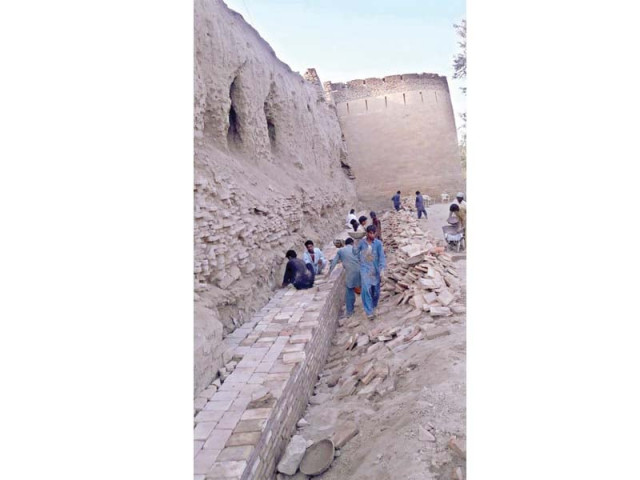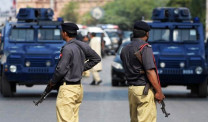Umerkot Fort remains a sight to behold
Despite being centuries old, the structure still fascinates visitors

Dominating its surroundings, the historic fort of Umerkot, built with red brick, still fascinates visitors despite being centuries old.
The memories of Mughal King Jalaluddin Muhammad Akbar and the famous folk tale Umar Marvi are synonymous with the fortress. Its walls reflect that it was once a mighty seat of power. Its museum, just adjacent to the fort, contains artefacts and weapons used by Mughals, Soomros, Kalhora and ancient kings.
However, conservationists believe that government measures are necessary to keeping the structure'e unique features from fading into the pages of history. The fort's construction is attributed to Mughal Emperor Jalaluddin Muhammad Akbar, while the famous folk tale Umar Marvi is also associated with the fortress.
The outer walls are 45 feet high, 17 feet wide and about eight feet thick. Seven cannons are also mounted on the walls to deter and monitor possible invaders. One of the cannons is named after the Holy Prophet (PBUH).
According to the inscription on an iron plaque on the outer side, the Umerkot fort has seen the rise and fall of different rulers. The Soomro family ruled the city of Umerkot from 1050 to 1350, and the first ruler from this tribe built this fort during the period. In the latter part of the 13th century, it was conquered by the Rajput king Parmar Sodho and his successor Rana Prashad sheltered Mughal Emperor Humayun in 1541 when he was on the run after Sher Shah Suri defeated him.
Humayun's illustrious son Akbar was born in Umerkot.
The fort was taken away from the Rajput rulers by the Kalhora rulers. However, the heirs of Kalhora rulers sold the fort to the raja of Jodhpur. In 1813, Talpur rulers recaptured this fort.
The British occupied Sindh in 1843 and the fort fell under their control. At the four corners of the rectangular fort walls is a semi-circular defensive tower, and on the other side is an entrance with an arch.
There is a red brick dome-style building styled in Mughal archtecture, consisting of four pillars and arched doors.
A long row of fields and tall trees can be seen around this place.
According to an inscription on a plaque near the birthplace of Akbar, the emperor was born on November 23, 1542. When Humayun settled in the area after retreating from the battle.
Published in The Express Tribune, March 13th, 2022.



















COMMENTS
Comments are moderated and generally will be posted if they are on-topic and not abusive.
For more information, please see our Comments FAQ